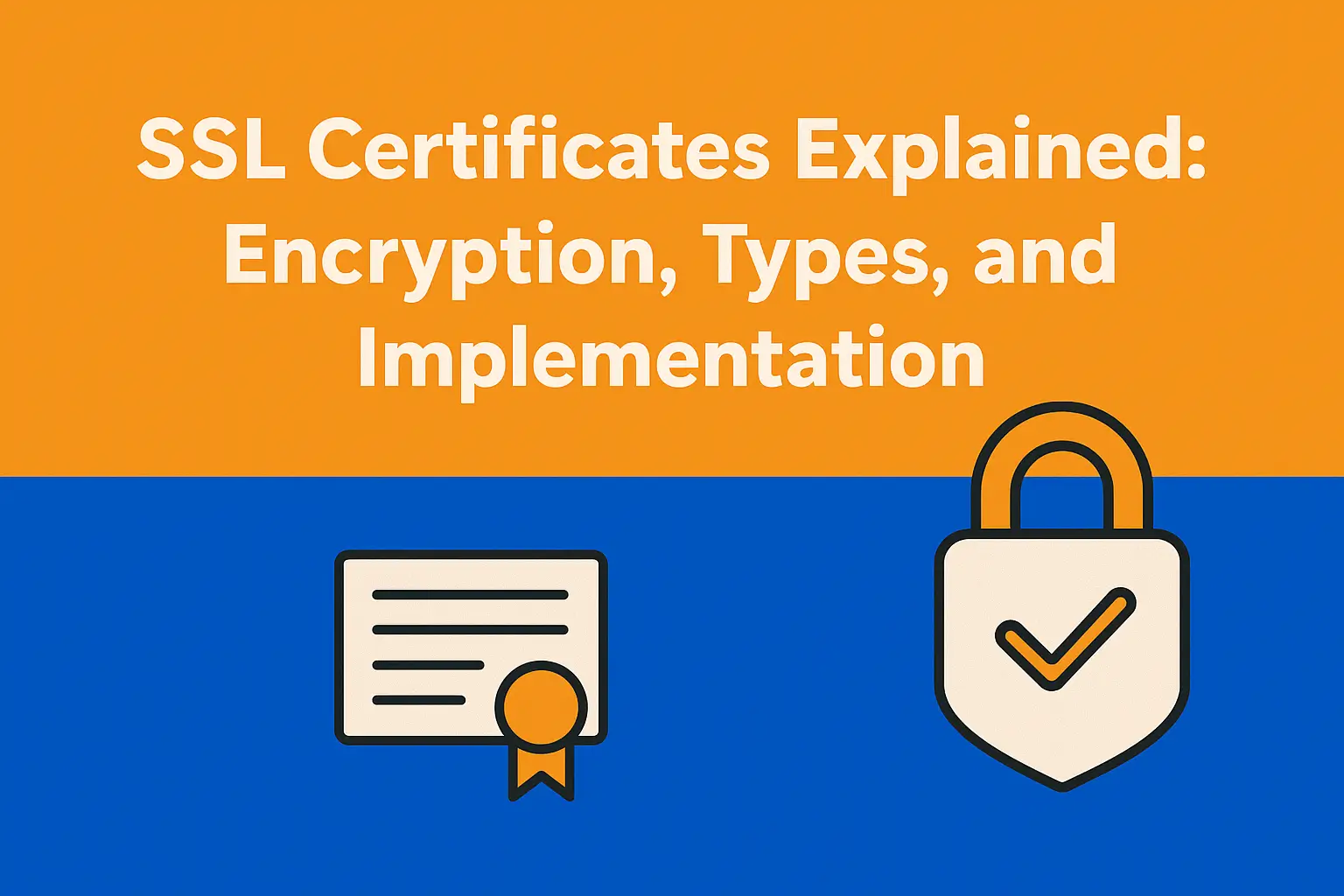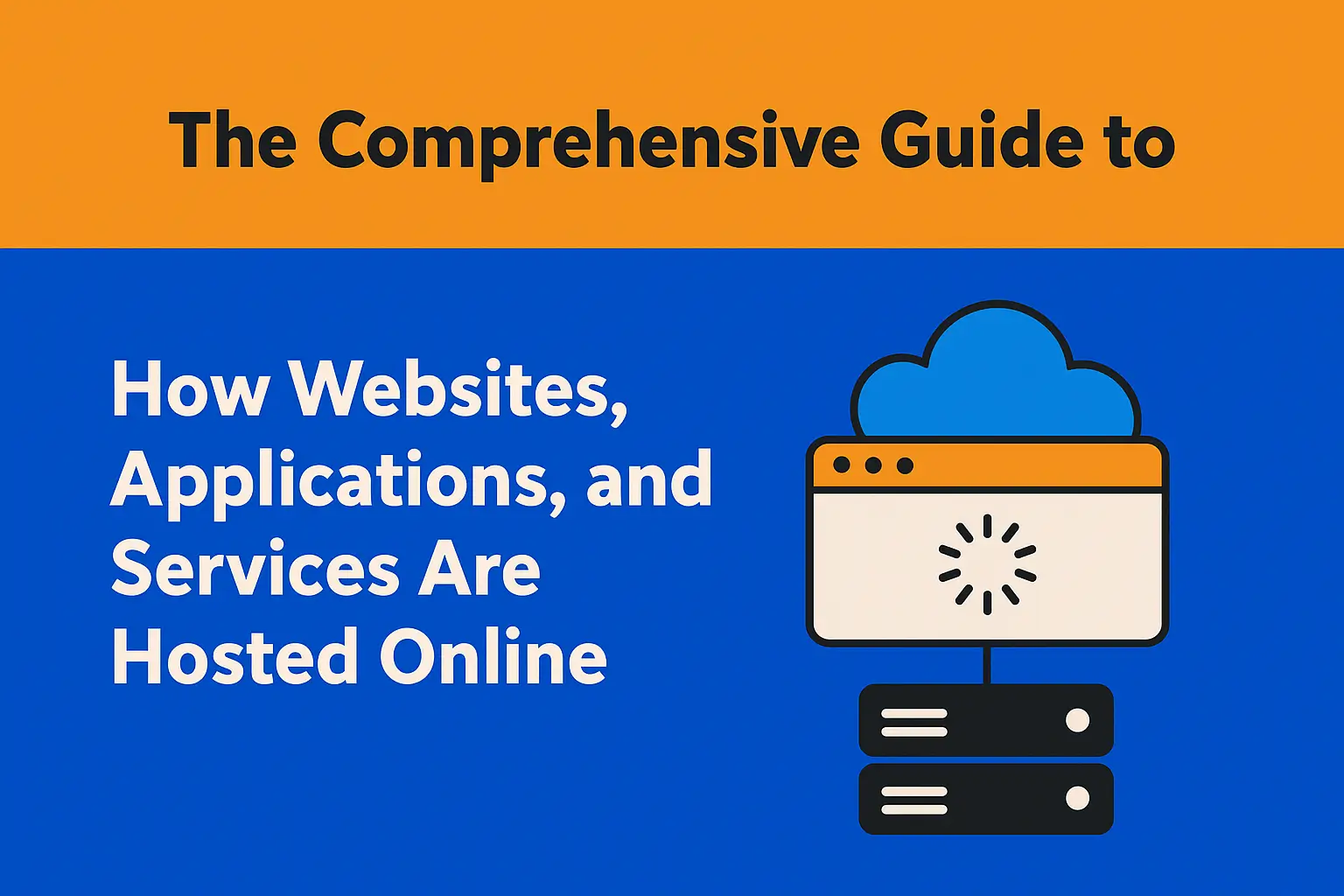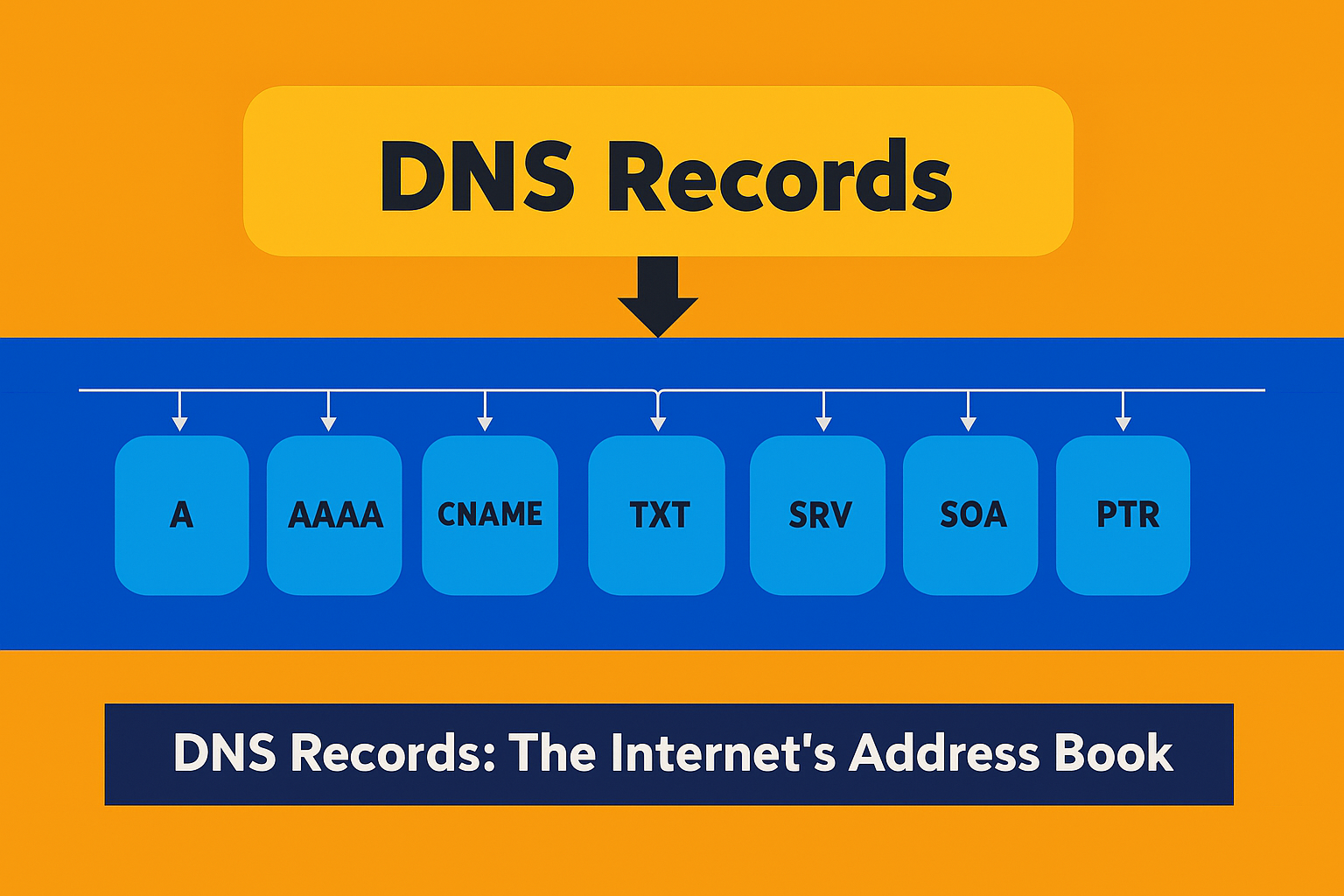
Introduction to Domain Names and Their Importance
In the digital era, domain names serve as the virtual address of your online presence. A domain name is essentially a unique string of characters that identifies a website on the internet. The historical context of domain names dates back to the 1980s when the Domain Name System (DNS) was introduced to simplify the process of navigating the web. Over the years, domain names have evolved from basic .com, .org, and .net extensions to include a multitude of specialized extensions such as .tech, .shop, and .blog.
Understanding the importance of a good domain name is crucial for any business or individual seeking a strong online presence. A well-chosen domain name is not only memorable but also instrumental in building a solid brand identity. It encapsulates the essence of your business, making it easier for customers to recall and associate with your products or services.
Moreover, the strategic selection of a domain name can significantly impact search engine optimization (SEO). Domain names that include relevant keywords can enhance visibility on search engines, thereby driving organic traffic to your website. It is essential, however, to avoid the pitfalls of keyword stuffing and choose a name that maintains a balance between relevance and simplicity.
In addition to branding and SEO, a trustworthy domain name fosters customer confidence. A professional and relevant domain name assures potential visitors of the credibility of your website. This trust is further reinforced when the domain name aligns seamlessly with your brand’s overall identity and values.
In summary, domain names form the foundation of your online identity. Their significance extends beyond mere web addresses to encompass branding, SEO, and customer trust. By understanding the dynamics of domain names, you can make informed decisions that will propel your online presence to new heights.
Brainstorming and Selecting the Right Domain Name
Creating a compelling online presence starts with the fundamental step of selecting the right domain name. The brainstorming phase is crucial for generating potential domain names, and a structured approach can greatly enhance creativity and effectiveness. Here are a few methods to guide you through the process.
First, mind mapping can significantly aid in the brainstorming process. This visual technique involves jotting down central themes, relevant keywords, and associated ideas, then exploring connections between them. For instance, if your business revolves around organic skincare, central terms like “natural,” “beauty,” and “wellness” can be expanded into various related words and phrases. This exercise helps in the natural development of unique and meaningful domain names.
Additionally, conducting thorough keyword research is invaluable. Utilize tools like Google Keyword Planner or SEMrush to identify high-traffic keywords relevant to your niche. Incorporating these keywords into your domain name can boost its visibility and relevance. Remember to balance keywords with simplicity – overly complex names can be challenging to remember and type.
Analysing competitors and industry leaders can also provide insight into effective domain name structures. Identify patterns in popular domain names within your sector; this might reveal trends in simplicity, length, and keyword usage that resonate with your target audience. Competitor analysis can also highlight names to avoid using, to steer clear of legal issues or confusion.
Key attributes of a strong domain name include simplicity, memorability, and relevance. A simple, easy-to-spell domain name ensures users can effortlessly recall and share it. Memorable names often evoke imagery or emotions, making them stick in users’ minds. Most importantly, the domain name should clearly convey the core essence of your business or blog niche, ensuring alignment with user expectations and search engine algorithms.
By blending creativity with strategic analysis, you can brainstorm and select a domain name that not only reflects your brand’s identity but also strengthens your online presence. Each element from mind mapping to competitor analysis plays a pivotal role in crafting a domain name that is both effective and enduring.
Understanding Different Domain Extensions
In the ever-evolving digital landscape, the choice of a domain extension plays a crucial role in shaping your online presence. Domain extensions, also referred to as Top-Level Domains (TLDs), are the suffixes that follow the main body of your domain name. Common examples include .com, .net, .org, and the myriad of newer options like .tech, .blog, and country-specific extensions such as .uk or .de. Each of these extensions has distinct implications for SEO, user perception, and domain name availability.
The .com extension is perhaps the most widely recognized and trusted TLD. Originally intended for commercial entities, it has become the default choice for businesses of all sizes. The .com extension is often associated with credibility and professionalism, which can positively influence user perception and trust. From an SEO perspective, it provides a neutral ground without any specific advantages or drawbacks, though its popularity can make finding an available .com domain challenging.
Next, the .net extension, initially designed for networking entities, like internet service providers, offers a degree of flexibility and professionalism similar to .com. It is often used as a secondary option when the desired .com domain is unavailable. While not as universally recognized as .com, it remains a credible and viable choice for many businesses and organizations.
The .org extension is traditionally associated with non-profit organizations, charities, and educational institutions. It is particularly fitting for entities focusing on community and advocacy work. User perception of .org domains is generally positive, conveying a sense of trust and altruism. However, for-profit businesses may find it less suitable as it could cause confusion regarding the nature of the organization.
In recent years, the introduction of newer TLDs such as .tech and .blog aims to cater to specific industries and niches. These extensions can enhance brand specificity and memorability, positively impacting user perception. For example, a .tech domain might appeal to tech-savvy audiences and tech-related businesses, while .blog suits content creators and bloggers. These unique extensions can provide a competitive edge in SEO, particularly within niche markets, though their newer status may require additional user education to establish trust.
Country-specific TLDs like .uk (United Kingdom) or .de (Germany) can significantly impact both SEO and user perception, especially for businesses targeting local markets. These extensions communicate a strong geographical correlation, appealing to local users and improving search engine ranking in the specified region.
Selecting the appropriate domain extension hinges on various factors such as target audience, industry, and business purpose. Evaluating the pros and cons of each TLD can lead to more informed decisions, ultimately strengthening the online presence of your brand.
Balancing Creativity and SEO: Keyword Optimization
In the quest to build a robust online presence, finding the right balance between creativity and SEO is crucial when selecting a domain name. A domain name that resonates well with your audience and incorporates essential SEO elements can significantly boost your search engine rankings. However, achieving this balance is an intricate process that involves thoughtful keyword research and strategic integration.
The first step in this balancing act is conducting comprehensive keyword research. Understanding the terms your target audience frequently searches for can provide invaluable insights into what keywords to include in your domain name. Tools such as Google Keyword Planner and SEMrush can help identify high-volume, relevant keywords that align with your brand’s mission and services.
Incorporating these targeted keywords into your domain name can yield notable SEO benefits. A keyword-rich domain name can improve your website’s visibility in search engine results pages (SERPs), making it easier for potential customers to find you. Moreover, a well-chosen domain name can enhance your brand’s authority and trustworthiness in the eyes of both search engines and users.
However, it’s essential to avoid the pitfalls of over-optimization. An overtly keyword-stuffed domain name can appear spammy and unprofessional. Instead of cramming multiple keywords into the domain, aim for a clean, memorable name that integrates a single, highly relevant keyword naturally. For example, a business specializing in eco-friendly products might choose a domain like “EcoGoods.com” rather than “BuyCheapEcoFriendlySustainableProducts.com.”
To achieve this natural integration, consider brandable keywords that align with your business identity without compromising SEO. Combining creativity with strategic keyword use ensures that your domain name is not only effective for SEO but also distinctive and memorable. Experiment with synonyms, combine words, or even create new terms that capture the essence of your brand while including a targeted keyword.
The journey to a perfect domain name is one of balance and precision. By integrating keywords judiciously and creatively, you can optimize your online presence without sacrificing the unique appeal of your brand name.
Avoiding Common Pitfalls and Legal Considerations
When selecting a domain name for your online presence, avoiding common pitfalls is crucial for long-term success. One frequent mistake is the use of hyphens in domain names. While hyphens may seem to aid readability, they often confuse users and can be easily forgotten, leading to a loss of traffic. Additionally, hyphenated domain names can come across as less authoritative or trustworthy.
Misspellings are another significant error to avoid. Although creative spelling might seem like a way to secure a unique domain name, it can lead to misunderstandings and decreased accessibility. Users typically remember common spellings, and any deviation can result in missed opportunities as individuals struggle to find your website. Ensuring that your domain name is straightforward and simple to spell is a key to maintaining a strong online presence.
Legal considerations are equally important when choosing a domain name. Utilizing trademarked terms can result in legal complications, including cease and desist orders or lawsuits from trademark holders. It is essential to conduct thorough research to confirm that your chosen domain name does not infringe on existing trademarks. This ensures both compliance and the protection of your online reputation.
Moreover, copyright issues are a potential risk if your domain name closely resembles copyrighted material or other intellectual property. Careful selection and verification are necessary to avoid potential disputes. Leveraging online tools for trademark and copyright searches can help you navigate these complexities and secure a domain name free from legal entanglements.
Adopting these strategies will help you sidestep common mistakes and legal difficulties, contributing to a robust online presence. By understanding and applying these principles, you can ensure that your domain name aligns with best practices, fostering both user trust and legal security.
Checking Domain Name Availability and Registration
Securing an apt domain name is a cornerstone of building a strong online presence. The initial step involves verifying the availability of your desired domain name. Several online tools and services facilitate this process, making it both efficient and straightforward. Popular platforms such as GoDaddy, Namecheap, and Google Domains offer user-friendly interfaces to explore domain name availability. Simply input your preferred domain name into these search tools, and they will instantly provide its availability status, along with alternative suggestions if your first choice is unavailable.
Once you have confirmed that your desired domain name is available, the next step is the registration process. Choosing a reliable domain registrar is crucial. Reputable registrars like GoDaddy, Namecheap, and Google Domains are known for their customer support and additional services. During registration, you will also encounter options for selecting your domain’s privacy settings. Opting for domain privacy protection is advisable as it conceals your personal information in the WHOIS database, thus protecting you from unwanted solicitations and potential cyber threats.
Additionally, activating the auto-renewal feature during the registration phase is highly recommended. This function ensures that your domain name is automatically renewed before it expires, mitigating the risk of losing it inadvertently. The inconvenience and potential loss that comes with a lapsed domain can be significant, impacting your site’s visibility and credibility.
Incorporating these strategies – checking the domain name availability through reliable online tools, choosing a reputable registrar, availing privacy options, and leveraging auto-renewal – collectively establish a firm foundation for a strong online presence. This meticulous approach will not only secure your chosen digital identity but also safeguard your online operations against common pitfalls.
Protecting and Managing Your Domain Name
Once you have successfully chosen and registered a suitable domain name, the next crucial step is to ensure its protection and effective management. One of the foremost actions is to set up proper Domain Name System (DNS) settings. DNS settings are essential for directing internet traffic to your website and email servers. Misconfigured DNS settings can lead to accessibility issues, so it’s imperative to set these correctly from the start.
Using domain privacy protection services is another vital measure. Purchasing domain privacy protection services can conceal personal information such as your name, address, and contact details from the public WHOIS database, significantly minimizing risks like identity theft, spamming, and phishing attacks.
Equally important is renewing your domain name timely. Failing to renew can lead to the expiration of your domain, making it available for others to register. Consider setting up automatic renewal with your registrar to avoid any lapse in ownership. Most registrars offer reminders before the domain approaches its expiration date.
Monitoring for unauthorized use or infringement of your domain name is also critical. Cyber squatting and typosquatting are common issues where others register similar domain names to divert your traffic or tarnish your brand reputation. Regularly monitoring these activities ensures you can take swift action, such as reporting the infringement or acquiring similar domain names yourself.
Scalability should also be considered if your business grows and requires multiple domain names. Managing multiple domains can be complex, but tools and services are available to simplify this process. Consolidating all domain names with a single registrar and using DNS management tools can streamline operations and reduce administrative burdens.“`
Case Studies and Real-World Examples
Real-world examples provide invaluable insights into the myriad ways businesses and blogs have successfully utilized effective domain name strategies to fortify their online presence. One such case is that of the tech giant, Apple Inc., whose succinct domain name, Apple.com, has become synonymous with innovation and reliability. The simplicity and directness of their domain facilitate easy recall and strengthen brand association, ensuring that customers and stakeholders alike can effortlessly navigate online to engage with their products and services.
Another noteworthy example is the fashion e-commerce platform, ASOS. Initially known as As Seen On Screen, the company underwent a strategic rebranding to ASOS.com. This shorter, more catchy domain not only made their brand easier to remember but also broadened their appeal beyond merely screen-related fashion. This move was pivotal in achieving substantial market growth and establishing a robust global presence.
In the blogging sphere, Tim Ferriss, author and entrepreneur, illustrates an excellent domain strategy with fourhourworkweek.com. Derived from his best-selling book, “The 4-Hour Workweek,” the domain serves as a memorable representation of his personal brand and primary content focus. This effective alignment between his domain name and brand mission enhances audience engagement and fosters a loyal following.
The food industry also shares exemplary domain name strategies. Consider Delish, a popular online food magazine, boasting the domain delish.com. The creativity in merging ‘delicious’ with a playful twist not only makes it memorable but aligns directly with their engaging, fun approach to food content. It’s clear, concise, and reflective of their content style.
These case studies highlight the critical importance of thoughtful domain name selection. A well-chosen domain can amplify brand identity, facilitate user engagement, and drive digital success. Entrepreneurs and bloggers alike would do well to internalize these lessons, leveraging comprehensive domain strategies to build a formidable online presence. By heeding these real-world examples, one can navigate the complexities of digital branding with greater efficacy and achieve sustained online success.




0 Comments